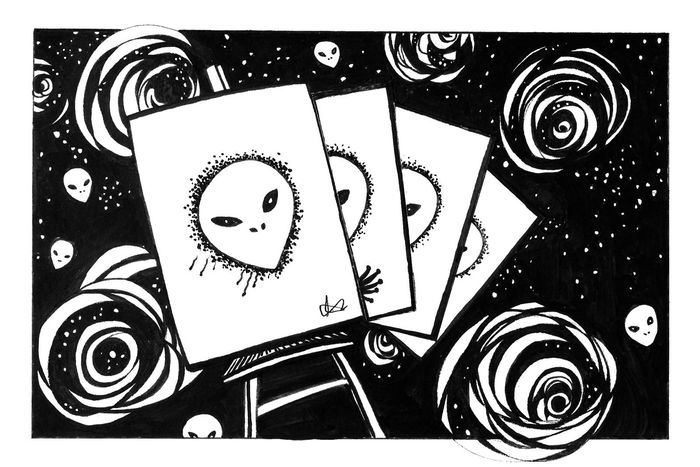The art that isn’t there
In her third column, Piper Whitehead looks at the art that you just can’t look at

You might be forgiven, in viewing the many, many rooms of the National Gallery or the Tate Modern, in thinking that public galleries (and private collections belonging to the kind of people who like to let us look at their stuff) have captured pretty much all the important things that have happened in art history. Yet, a lot of what informs our understanding of art in the past is missing.
“In trying to understand art of the past, our story will always be incomplete, because of the actions of a few”
Sometimes we know what happened to it. Art is often the victim of accidents as localised as a botched restoration, or as wide-ranging as war. Sometimes it is deliberately destroyed. Often, it’s simply lost to time through carelessness or decay. After all, most of us won’t be hanging onto posters of One Direction, or postcards from our gran because we’re thinking about how future art historians will need a few good examples of 21st century ephemeral visual culture. We could hardly have expected people from hundreds of years ago to do the same. A lot of things simply aren’t seen as important enough to keep. What’s more, many artworks that were considered important or valuable even back in the day aren’t in galleries or in private collections with any kind of public access. They haven’t been destroyed, at least not to our knowledge. They’re simply gone, and we don’t know where they are. This is, the art that isn’t there.
Of course, there’s undoubtedly someone, living or dead, who knows where each artwork has gone. But even hugely significant works can be deadly difficult to keep track of. Take Duccio’s Maesta from 1308. Shiny wooden altarpieces taller than a human being are difficult to lose, unless of course, you’re a person in the 18th century and you decide to cut it up and sell the pieces. A lot of parts ended up in galleries, but not all. Like missing people, someone will know where they are, even if they don’t know what they’re looking at. Even so, there’s no guarantee that they’ll make their way back into the public eye.
Many, many paintings have been victims of an enterprising person taking a look at them and thinking they would fit perfectly somewhere – if they were just a little bit smaller. For something closer to home, you can visit El Greco’s St John the Evangelist in the Fitzwilliam museum, but he’s one hand short of the full (or half length) saint. This was not accidental. In the words of 2020’s most celebrated art historian, Hannah Gadsby, ‘That was a decision!’
“They’re only worth anything because they are recognisably themselves”
Art also leaves us when someone decides to “liberate” it from a gallery. The largest art theft of all time was from the Isabella Gardner Museum in 1990 – A curious event for many reasons, not least because the thieves ignored some of the most valuable paintings in the museum in favour of, admittedly still very valuable, Rembrandts and a Vermeer. Maybe they were just fans of Dutch art? So, the art is stolen, but where does it go?
Suspicion in this case has fallen on various Boston gangs, who may have intended to use it to negotiate with the police for release of their members from prison. After all, who can actually display stolen art? How do you profit from such a venture? You can’t just sell the Rembrandt you nicked on the open market, so the work loses value as soon as you take it, unless you’re lucky enough to find an interested oligarch or mafia boss. Artworks are clearly different from most things you might steal, in that most of them are valued for being one-of-a-kind, or for being by a specific artist. In other words, they’re only worth anything because they are recognisably themselves.
According to the FBI, a lot of art thieves are just that stupid. They suddenly find themselves in a situation where the only ones who’ll buy the art are the people who they stole it from in the first place. The Isabella Gardner put up a hefty reward, but it is still much less than the actual value of the works. The only safe thing to do then is keep it. So, the mafia ends up with pretty stellar art collections, almost by accident.
However, it’s not just stolen art that disappears from public consciousness. Leonardo Da Vinci’s Salvator Mundi became the most expensive painting ever sold in 2017, and its current location is unknown. Best bet is that it is on the yacht of the crown prince of Saudi Arabia... Or in Switzerland somewhere. We have some guesses about where the Salvator Mundi is, but we might never see it again. The reality is a lot of artwork bought by big investors ends up in warehouses. There they can appreciate in value without the burden of being appreciated. So much of the art in this world is divided, lost, stolen, or simply kept away. It’s important to remember that in trying to understand art of the past, our story will always be incomplete, because of the actions of a few. We can only do the best we can with what is left to us.
 News / Cambridge bus strikes continue into new year16 January 2026
News / Cambridge bus strikes continue into new year16 January 2026 News / Uni members slam ‘totalitarian’ recommendation to stop vet course 15 January 2026
News / Uni members slam ‘totalitarian’ recommendation to stop vet course 15 January 2026 News / Local business in trademark battle with Uni over use of ‘Cambridge’17 January 2026
News / Local business in trademark battle with Uni over use of ‘Cambridge’17 January 2026 Science / Why smart students keep failing to quit smoking15 January 2026
Science / Why smart students keep failing to quit smoking15 January 2026 Interviews / The Cambridge Cupid: what’s the secret to a great date?14 January 2026
Interviews / The Cambridge Cupid: what’s the secret to a great date?14 January 2026










